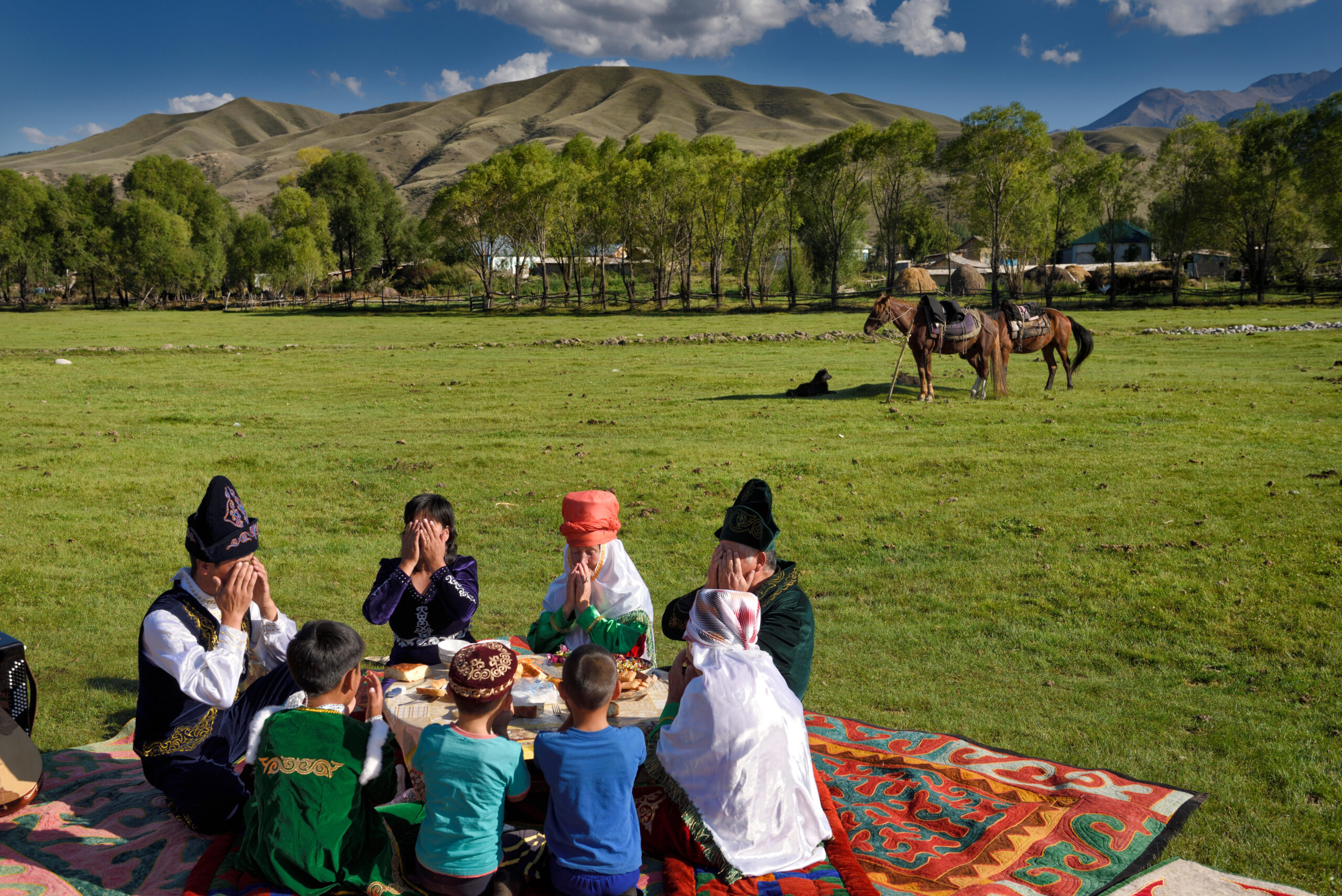Editor’s note: The Astana Times presents a new section Discover Kazakhstan dedicated to exploring the rich cultural heritage of Kazakhstan. Each article explores different aspects of Kazakh life, offering insights and stories that highlight the unique traditions.
Physicists once argued about whether an external observer could understand the structure of the universe based on just one atom. The answer to this question would be something like this: based on one atom, one can understand a great deal, if not everything, about our cosmos.

Beshbarmak – National Kazakh dish, prepared with meat and pasta. Beshbarmak dish close-up on a plate on the table. Photo credit: Alamy
And the same holds true for Beshbarmaq. Just as we see the reflections of the surrounding world in a drop of water, we can observe various facets of the lifestyle of a nomadic people in this one national dish.
Beshbarmaq (or besparmak) is a word of Turkic origin that means “five fingers.” It refers to eating with your hands, without spoons, forks, and knives. However, in 2003, in Astana, the Department for the Development of the State Language refused to register a restaurant under the name “Beşbarmachnaya” (which roughly translates to Beshbarmaq House). There was even a court case where several invited philologists and doctors of science argued that the word Beshbarmaq is not a Kazakh word, but a foreign borrowing. Thus, they suggested it is inappropriate to use it as a proper name to refer to a traditional Kazakh food. It should instead be called et asy (meat treat) or simply et (meat). Despite its contested name, we use “Beshbarmaq” here as it speaks to the broader pan-Turkic and ancient Asian culinary heritage.
Essential ingredients
Traditionally, Beshbarmaq was a luxury for the nomads, reserved for special occasions. The ingredients reflect this. Wheat for the dough had to be bought and carried, unlike meat and milk readily available in the steppe. The dish also required a kazan (cauldron), a rare and valuable item often passed down through generations.

“In a Yurt” painting (1891) by Nikolai Khludov. Photo credit: Wikimedia Commons
1. Meat (Et): Horse meat is traditional, though lamb and sausages like kazy and shuzhyk are also popular today.
2. Dough (Jaima): Wheat flour dough, often with eggs, is rolled thin and boiled.
3. Broth (Sorpa): A strained meat broth used to season the dish.
4. Dressing (Tuzdyk): Herbs simmered in broth, traditionally wild onion, now often replaced with onions and garlic.
5. Qurt: Salted, dried cottage cheese, crucial for digesting the large quantity of meat.
Ritual of Beshbarmaq
Beshbarmaq is more than a dish; it is a ceremonial experience. Tea bookends the meal, with young children often pouring it. Guests are seated together, with a hierarchy reflected in the division of meat. The eldest or most honored guest sits at the tör, the highest place at the table.

Traditional Kazakh Family Saying Grace At A Picnic In Chilik River Valley Saty Kazakhstan. Photo credit: Alamy
The meat, carved by young men, is served on various dishes like bas tabak (a big plate) for senior guests and kyz tabak (a plate for unmarried girls). Each serving carries a specific significance. The host blesses the feast, and the meal unfolds with conversation and shared enjoyment, often lasting hours.
In modern Kazakhstan, the tradition of Beshbarmaq endures. Whether in rural yurts or urban homes, families keep the right cuts of meat ready for unexpected visits of guests.
Basic recipe for Beshbarmaq
Start by boiling raw meat (horse, lamb, or both) in cold water over low heat for three to four hours. Add sun-dried or smoked meats and sausages (kazy, shuzhyk) 30 minutes before it’s done. For the dough, mix 200 grams of wheat flour with one egg and three-four grams of salt. Optionally, add pumpkin puree for color. Roll the dough thin and boil in the broth for two minutes. Chop jusai (wild onion) or onions into rings, add a little broth, and cook for about two minutes. Add grated kurt (dried salted cheese) to the mixture. Arrange the cooked dough on a plate, place the meat on top, and pour tuzdyk over it. Serve with shorpa in small pitchers or cups, adding grated kurt to the broth if desired.

Asian Kazakh National Dish Beshbarmak. Photo credit: Olga Kriger/Alamy
Bon Appétit or as we say in Kazakhstan, as bolsyn!
The authors are the editorial team of the Qalam historical media project.
